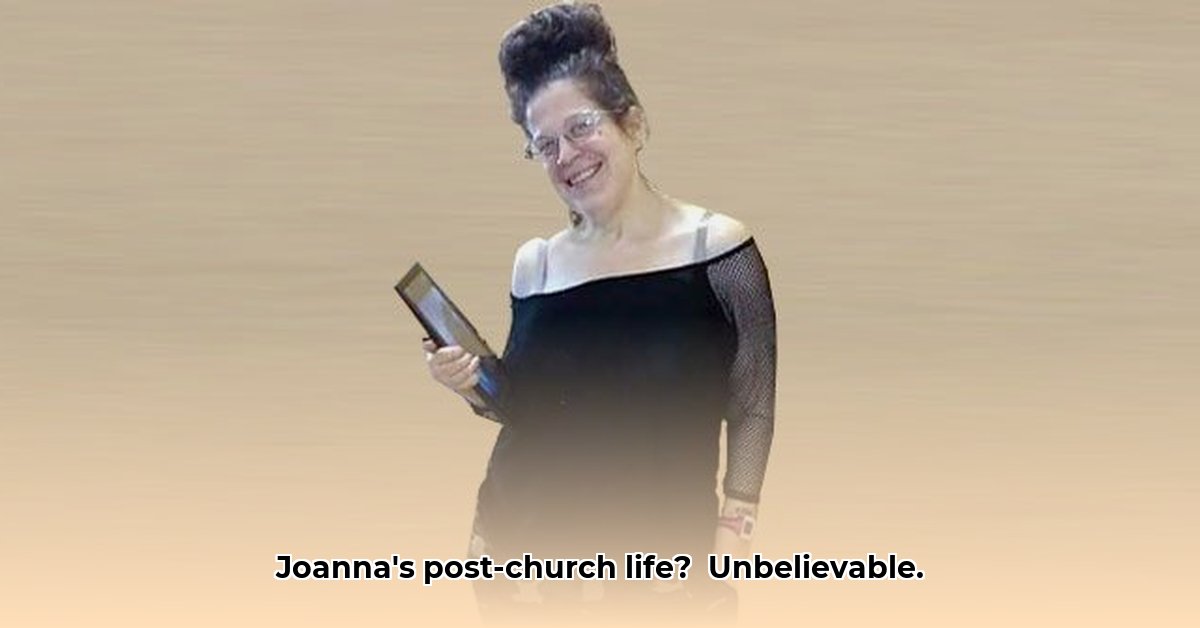
From Backing Vocals to Bold Independence: Joanna Cotten's Solo Career Launch
Joanna Cotten, a familiar face and voice to Eric Church's fans after nearly a decade as a backing vocalist, has embarked on a thrilling solo career. This transition, however, is more than just a career shift; it’s a testament to ambition, resilience, and the calculated risks artists take to pursue their own creative visions. Her journey also reflects the multifaceted challenges faced by musicians balancing artistic aspirations with the demands of the industry and personal well-being. This isn’t merely a story of leaving a backing vocalist gig; it's about a complete transformation, encompassing artistic reinvention and personal growth, exemplified by a significant weight loss journey.
A Decade of Learning: Growth in the Spotlight
Spending a decade performing nightly before thousands with a country music superstar provided Cotten invaluable experience. This wasn’t just about singing; it was a masterclass in stage presence, crowd engagement, and building a loyal following. But even the most successful backing vocalist eventually feels the pull of their own creative ambitions. The comfort of an established team can limit artistic expression, and Cotten clearly felt the need to express her unique musical voice. This transition wasn't an escape, but a proactive step toward controlling her narrative and exploring her full potential. The complexity of this transition was further compounded by the demands of managing her personal well-being, including a significant weight loss journey. How did she balance all this? It required courage, considerable planning, and a strong sense of self.
Funkabilly Fusion: A Unique Sound in a Competitive Market
Cotten's musical style—what she calls "Funkabilly"—is a bold and distinctive mix of blues, funk, and country that sets her apart. This unique blend is a calculated risk. While it promises originality, it might limit immediate mainstream appeal; niche genres often require sustained effort to cultivate a broader audience. However, Cotten's experience performing with Eric Church demonstrates her ability to connect with large crowds. Now, the challenge is translating that connection to her own solo performances, showcasing her unique talent directly to the audience. Does her prior success guarantee success in this new venture? The answer remains unwritten, but her unique sound offers a significant advantage in a crowded musical landscape.
Building a Career Brick by Brick: A Strategic Roadmap
Cotten's immediate plans are focused and strategic: releasing new music, building a strong online presence (website and social media), securing a talent agent, and targeting niche music festivals aligned with "Funkabilly." This is a crucial testing phase, demanding experimentation and adaptation.
Her long-term aspirations are equally ambitious: sustained tours, collaborations with other artists, a devoted fanbase, and a full-length album release. Understanding the power of brand partnerships is also key to her long-term viability. Will this meticulously crafted strategy yield success? The music industry is notoriously unpredictable, but her approach suggests she's prepared for the challenges ahead.
Navigating the Challenges: Risks and Rewards in the Music Industry
The music industry is intensely competitive and unpredictable. Cotten's solo venture carries inherent risks, but her strategic planning aims to mitigate these effectively. Her personal journey, including her weight loss, highlights the immense pressures artists face while balancing their goals with their health and well-being.
How to Market Funkabilly Music Effectively: Lessons from Cotten's Journey
Cotten’s story offers valuable lessons for independent artists, especially those venturing into niche genres. Her path highlights the importance of meticulous planning and strategic marketing in achieving success outside the traditional music industry structure. What are the key components of a successful “Funkabilly” marketing strategy?
Key Takeaways:
- Niche Genre Domination: Independent artists are increasingly successful in niche markets.
- Strategic Marketing Blend: Successful marketing requires a blend of digital distribution, social media, email marketing, and careful budgeting.
- Brand Building: A strong, consistent online presence is crucial.
- Data-Driven Decisions: Data analysis and KPI (Key Performance Indicator) monitoring are essential for adaptation.
- Revenue Diversification: Diversifying income streams (merchandise, live shows) ensures long-term sustainability.
From Backing Vocals to Billboard Charts: Building a Brand in the Indie Music Landscape
Successful marketing for “Funkabilly” requires a multi-pronged strategy. Defining your brand identity—the unique elements of your music, image, and message—is paramount. Understanding your target audience—their online behavior, interests—is equally vital for crafting a relevant message. Digital distribution (Spotify, Apple Music, Bandcamp) is non-negotiable, but optimizing profiles with high-quality visuals and compelling bios is crucial. A comprehensive online presence (website, social media, email list) is essential for cultivating direct connections with fans. Visual storytelling, through music videos and other content, humanizes your brand and increases engagement. A multifaceted social media approach, focusing on interaction rather than just broadcasting, is key, along with the development of an email list for direct communication. Careful budget allocation and consistent monitoring of KPIs, such as streams, downloads, and social media engagement, ensure adjustments can be made to optimize the overall strategy. This data-driven approach enhances the possibilities of success.
Droptrack's Guide to Independent Music Promotion